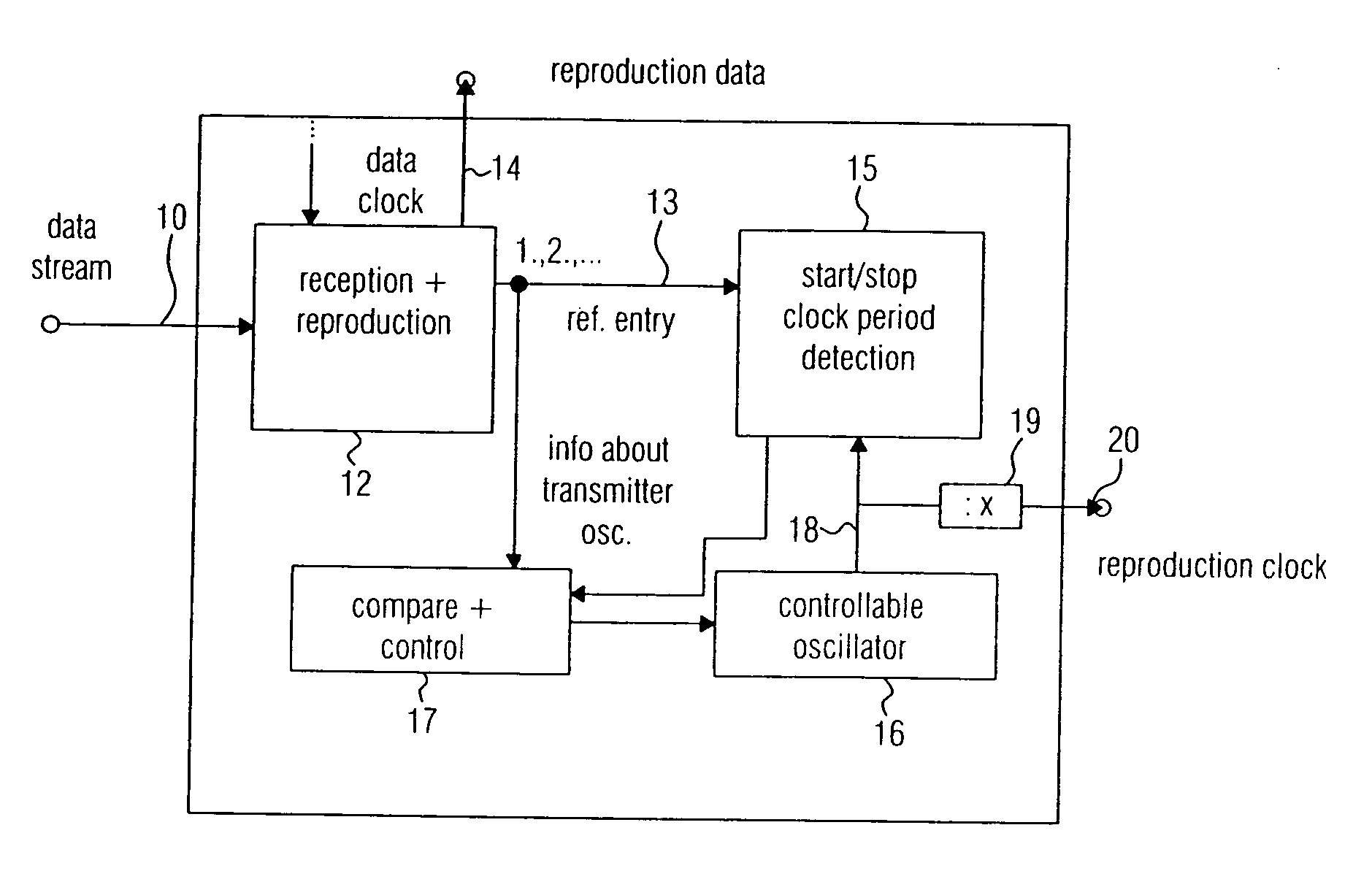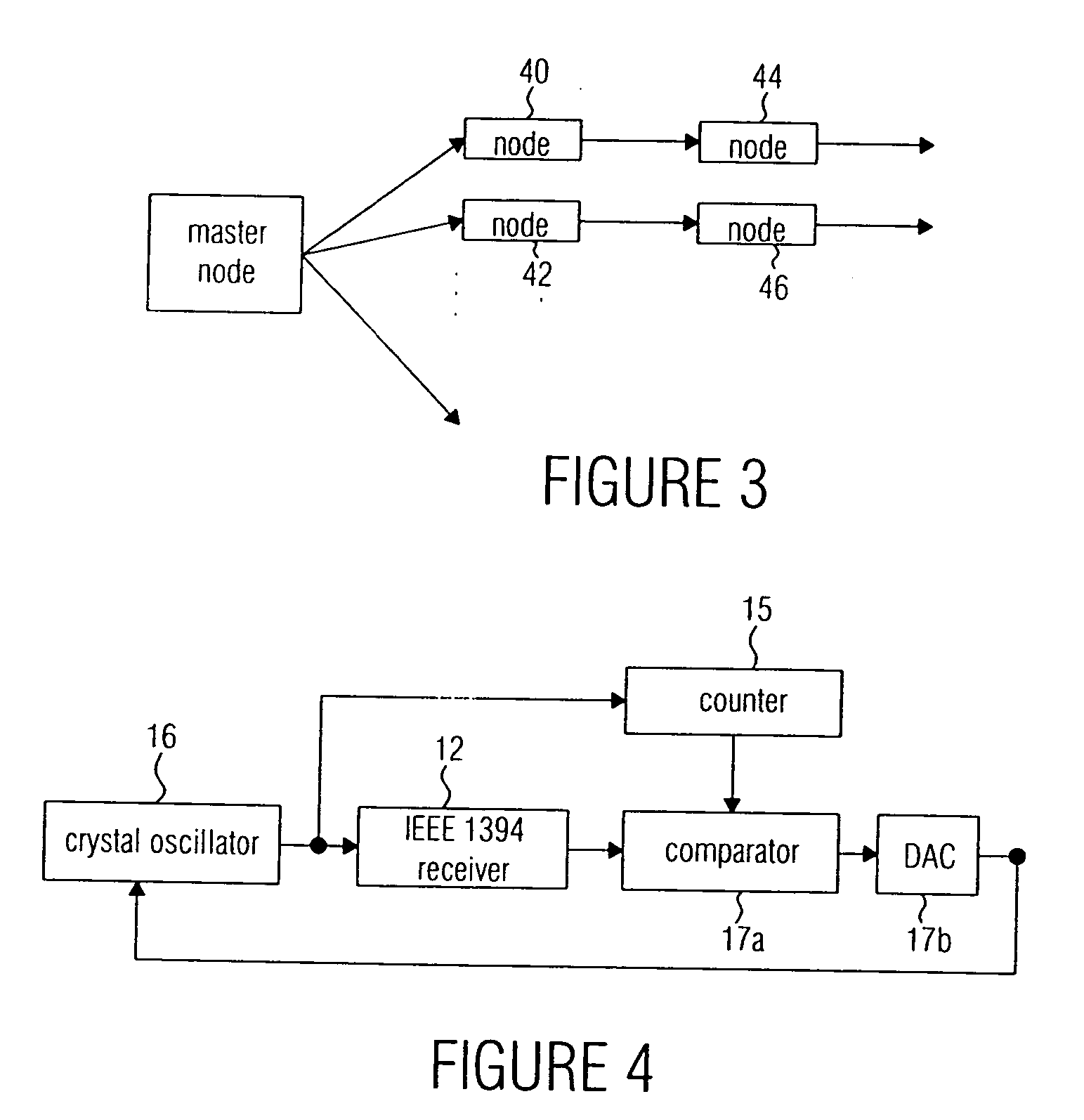Receiver and method for operating a receiver
- Summary
- Abstract
- Description
- Claims
- Application Information
AI Technical Summary
Benefits of technology
Problems solved by technology
Method used
Image
Examples
Embodiment Construction
[0030] An embodiment includes a receiver for receiving a data stream fed into an input. The data stream comes from a transmitter and includes a first reference entry and a temporarily following second reference entry. The second reference entry includes information about a number of clock periods, which a clock oscillator has performed in the transmitter since the first reference entry.
[0031] The receiver further includes means for receiving and recovering at least the first and the second reference entry, wherein information about the first and the second reference entry are output at an output. Payload data in the data stream also received and recovered by means are output at an output of means. The receiver further includes a clock period detection preferably implemented as a counter and having a start / stop input connected to the reference entry line. Further, a controllable oscillator is provided which supplies from means for comparing the period number value standing in the se...
PUM
 Login to View More
Login to View More Abstract
Description
Claims
Application Information
 Login to View More
Login to View More - R&D
- Intellectual Property
- Life Sciences
- Materials
- Tech Scout
- Unparalleled Data Quality
- Higher Quality Content
- 60% Fewer Hallucinations
Browse by: Latest US Patents, China's latest patents, Technical Efficacy Thesaurus, Application Domain, Technology Topic, Popular Technical Reports.
© 2025 PatSnap. All rights reserved.Legal|Privacy policy|Modern Slavery Act Transparency Statement|Sitemap|About US| Contact US: help@patsnap.com



